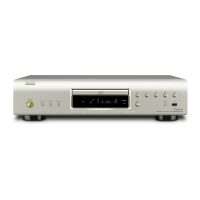3
ENGLISH
Basic version Advanced version InformationSimple version
Cautions on handling
• Before turning the power switch on
Check once again that all connections are correct and that there are no problems with the connection
cables.
• Power is supplied to some of the circuitry even when the unit is set to the standby mode. When leaving
home for long periods of time, be sure to unplug the power cord from the power outlet.
• Image persistence (image burn-in)
Do not leave still images of the disc menu, the unit menu, etc., displayed on the TV screen for long
periods. This can result in image persistence (image burn-in) on the screen.
• About condensation
If there is a major difference in temperature between the inside of the unit and the surroundings,
condensation (dew) may form on the operating parts inside the unit, causing the unit not to operate
properly.
If this happens, let the unit sit for an hour or two with the power turned off and wait until there is little
difference in temperature before using the unit.
• Cautions on using mobile phones
Using a mobile phone near this unit may result in noise. If that occurs, move the mobile phone away from
the unit when it is in use.
• Moving the unit
Be sure to remove a disc, turn off the power and unplug the power cord from the power outlet. Next,
disconnect the connection cables to other system equipment before moving the unit.
• About Care
• Wipe the cabinet and control panel clean with a soft cloth.
• Follow the instructions when using a chemical cleaner.
• Benzene, paint thinner or other organic solvents, as well as insecticide, may cause material changes
and discoloration if brought into contact with the unit, and should, therefore, not be used.
• Sufficiently ventilate the place of installation
If the unit is left in a room full of the smoke from cigarettes, etc., for long periods of time, the surface of
the optical pickup could get dirty, in which case it will not be able to read the signals properly.
Cautions on handling for 3D video
Before viewing 3D video, refer to the considerations described in the instruction manuals and other
documents for your 3D enabled TV and 3D compatible glasses together with this manual.
• Do not view 3D video if you have epilepsy or heart disease, if you have had photosensitivity
reactions before, or when you do not feel well.
Doing so may aggravate the symptoms.
• When you view 3D movies, etc., take a break adequately, once per movie as a guide.
Prolonged viewing of 3D video may cause eye strain.
• Restrict viewing of 3D video to those aged six and over as a guide.
Children do not respond to tiredness and discomfort expressly, so they may suddenly get sick.
When children view 3D video, parents should keep their eyes open for signs of eye strain in children.
• Stop viewing 3D video when you see double images or you can not see 3D effects.
Viewing 3D video continuously in these conditions may cause eye strain.
• Stop viewing 3D video when you feel something wrong, get tired, or get sick.
Viewing 3D video continuously in these conditions may cause poor physical condition. Take a proper
break.
• Pay attention to nearby people and objects.
Reaching for something without a sense of distance due to 3D video or moving your body suddenly in
response to a 3D video image when you take it for a real object may cause injury to nearby people or
cause damages to nearby objects resulting in injury. Keep fragile objects away from your viewing area.
• Wear your vision correction glasses or contact lens under the 3D glasses if you have
nearsightedness, farsightedness, anisometropia, or astigmatism.
Viewing 3D video without correcting your vision may cause eye strain or decreased vision.
• Sit at a proper distance from the screen when you view 3D video.
Sitting too close to the screen may cause eye strain or decreased vision. Sit at a distance that is
recommended in the instruction manual for your TV.

